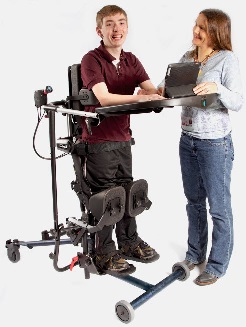Blog Roll: (Contributors)
» Hulet Smith, OT
» Megan Smith, PT
» Mike Price, OT
Topics:
Adaptive Devices
Adult Tricycles
Air Purifier
Allergy
Alternative Communication Devices
Alzheimer's Dementia Products
Aquatic Products
Arthritis Relief Products
Autism
Back Relief
Ball Pit/Pool
Bariatric
Bath Benches
Bathtub Lift
Bed Rails
Bedsores / Decubitus
Bidet
Body Solid Exercise Products
Breast Feeding Products
Bushel Trucks
Cancer
Catheters
CEU
Changing Bench
Child Car Seats
Child Care Products
Christmas Gifts
Clinic/Medical Equipment
Clinical Furniture
Cold and Flu
Communication Devices
Compression Garments
Computer Products
CPAP
Crutches
Daily Assistance Products
Daylight Lamps
Dental Care
Diabetes
Doctor's Office
Dysphagia
Electrodes
Electrolarynx
Emergency Preparedness
Ergonomic Equipment
Exam Tables
Exercise Products
Eyecare
Family Tricycles
First Aid Kits
Floor Scales
Fluidotherapy
Foot Drop
Foul Weather Gear
Furniture
Gait Trainers
General Articles
General Posts
Glassless Mirrors
Hand Sanitizer
Head Protection Helmets
Hearing Impaired
Heart Health
Heating Pad
Hip Fractures
Home Assistance Products
Home/Office Assistance
Hospital Beds
Hoyer Lifts
Hyperbaric chamber
Hyperthermia/Hypothermia
Ice/Hydration Carts
Impotence Products
Incontinence Products
Infection Control Gowns
Inspirational Stories
Lift Chairs
Light Therapy
Low Vision Products
Massage Tables & Chairs
Massage Units
Maternity
Medical Facility Products
Medical Scales
Multi-Sensory Environment
Natural Healing
Nebulizers
Non-Hospital Bedding
Nutritional Supplements
Office Furniture
One-Handed Products
Operating Room Devices
Ostomy Products
Oxygen Compressors
Oxygen Concentrator
Oxygen/Nebulizer Masks
Pain Relief
Paraffin Unit
Patient Lift
Patient Lifts
Patient Restraints
Patient Transfer Systems
Pediatric Bath Chairs
Pediatric Furniture
Pediatric Learning
Pediatric Recreation
Personal Listening Devices
Personal Warming Products
Physical Therapy
Pill Organizers
Pillows
Playground Equipment
Pool Lifts
Press Releases
Procedure Chairs
Pulse Oximeter
Reading Assistance
Reference Materials
Rehab Equipment
Rehabmart News
Rehabmart Newsletter
Respiratory Health
Rollators
Saunas
Scooters
Seniors
Shower Chairs
Shower Commode Chairs
Shower Gurney
Showers Chairs
Side Access Bathtubs
Skin Tear
Special Needs Dinnerware
Special Needs Seating
Special Report Articles
Splints
Sport Injuries
Standers
Staying Home
Stethoscopes
Stimulus Reward Toys
Stress Relief
Stroke
Strollers
Summertime Products and Summertime Fun
Talking Products
Therapy Balls
TheraTogs
Thermometers
Traction Devices & Tables
Treatment Tables
Ultrasound
Vibroacoustic Therapy
Vision Products
Walk-In Bathtub
Walking Aids
Walking Boot
Weighted Wearables
Wheelchair Accessories
Wheelchair Cushions
Wheelchair Lifts
Wheelchair Ramps
Wheelchair Transfer Systems
Wheelchairs
Women's Health
Work Hardening Products
Wound Care
Special Needs Children Can Stand Up for Themselves
Rehabmart offers many different types of pediatric standing frams at discount prices. Visit our pediatric standers page to view the different products we have to offer!
A stander provides the user with support in the vertical position, allowing someone living with a condition that compromises the ability to stand up with the help of the frame and pads to hold the hips and knees in an optimal position if needed. As with non-disabled people, a special needs person reaps the therapeutic benefits of standing such as increased circulation to the lower limbs while preventing bedsores; improved digestive function; and joint and muscle flexibility. Standing helps children develop muscle strength in the neck and shoulders as well as helping with socialization, allowing them easier interaction with their peers.
Personalized rehab plans frequently include standing programs, but for special needs kids, compliance by the caregiver can be challenging when the kid goes through growth spurts. Infant to late elementary age kids can simply be picked up and positioned in the stander without much fuss, but as the child starts to mature, his or her height and weight increase, making lifting and positioning awkward.

Helping to ease the transition into adulthood is the EasyStand Bantam Medium Stander. With a height range of 48 to 66 inches and the ability to support up to 200 pounds, the Bantam Stander has users covered from the first growth spurts through adolescence and in the case of smaller users, into adulthood. Three transfer positions accommodate chair-to-chair for kids who have some upper body control; supine for those who have poor head and upper body control; or supine with hip and knee flexion for users with contractures of the hip and knee or high tone. To stand, the caregiver straps the child into the Bantam Stander, then uses a manually operated hydraulic pump to gradually or quickly bring him or her to a standing position.
The Bantam Stander comes standard with two five-inch locking caster rear wheels and two five- inch caster front wheels; adjustable foot plates with a range from the seat pivot of eleven to nineteen and a half inches; swing-away front; knee pads; a manually operated hydraulic actuator with handle; chest pad; planar seat with a depth range of fourteen to nineteen inches; and black neoprene upholstery and a durable metal frame that cleans with a soft cloth and gentle spray cleaner.

A wide variety of accessories and options allow the Bantam Stander to be customized to the user’s individual needs. The optional tray is available in either shadow or clear acrylic and provides support to the chest area as well as a place to perform activities such as games or reading. There are pads and supports for the head, back, hips, chest, elbows, laterals, and knees as well as footplates with multiple adjustment capabilities and rotation. To help keep the child in place and properly positioned, there is a great selection of vests and belts.
The Bantam Stander is appropriate for private homes, special needs classrooms, and residential care centers. Special needs kids living with conditions such as spina bifida, muscular dystrophy, cerebral palsy, and other neuromuscular issues that impact the ability to stand benefit from reduced fatigue and cramping; improved lower body circulation; and the development of better head, neck and shoulder control. Caregivers in any setting will benefit from the ease of transfer and positioning while reducing the risk of back injuries, making the Bantam Stander helpful for everyone involved.
Fran Jablway,
Senior Medical Consumer Writer
and
Hulet Smith, OT
Rehabmart Team Leader & CEO
